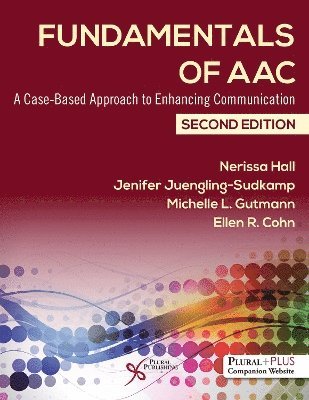
- Format
- Häftad (Paperback / softback)
- Språk
- Engelska
- Utgivningsdatum
- 2025-09-01
- Upplaga
- 2
- Förlag
- Plural Publishing Inc
- ISBN
- 9781635507737
Fundamentals of AAC
A Case-Based Approach to Enhancing Communication
Fler böcker av författarna
-
Tele-AAC
Nerissa Hall, Michelle L Gutmann, Jenifer Juengling-Sudkamp, Ellen R Cohn, Tbd
-
Papers of Benjamin Franklin
Benjamin Franklin, Ellen R Cohn
-
Telerehabilitation
Sajeesh Kumar, Ellen R Cohn
-
Videofluoroscopic Studies of Speech in Patients with Cleft Palate
M Leon Skolnick, Ellen R Cohn
Övrig information
Nerissa Hall, PhD, CCC-SLP, ATP, is co-founder of Comm?nic?re, LLC, a company that specializes in augmentative and alternative communication, assistive technology, telepractice, and tele-AAC working primarily with school-aged individuals, providing specialized, evidence-based intervention, assessment and consultation services. Jenifer Juengling-Sudkamp, PhD, CCC-SLP, is a speech-language pathologist at the Southeast Louisiana Veterans Health Care System/VA and adjunct professor in the Department of Orthopaedics at Tulane University School of Medicine. Michelle L. Gutmann, PhD, CCC-SLP, is a clinical professor at Purdue University Department of Speech, Language, and Hearing Sciences, where she teaches a variety of graduate courses including AAC, Counseling in Communication Disorders, and Motor Speech Disorders. Ellen R. Cohn, PhD, CCC-SLP, ASHA-F, is a professor in the Department of Communication Science and Disorders, University of Pittsburgh. She teaches courses in cleft palate/craniofacial disorders, professional issues, culture, diversity and healthcare, and rhetoric and communication.
Du kanske gillar
-
Fasting Cancer
Valter Longo
Inbunden
